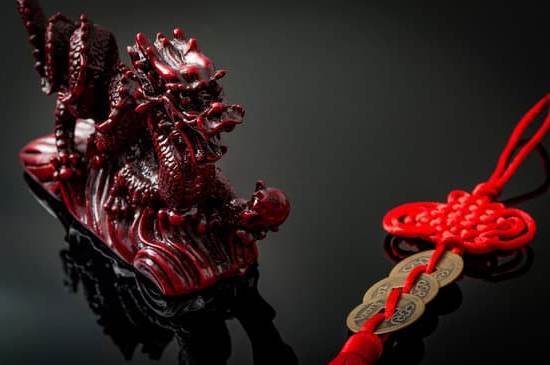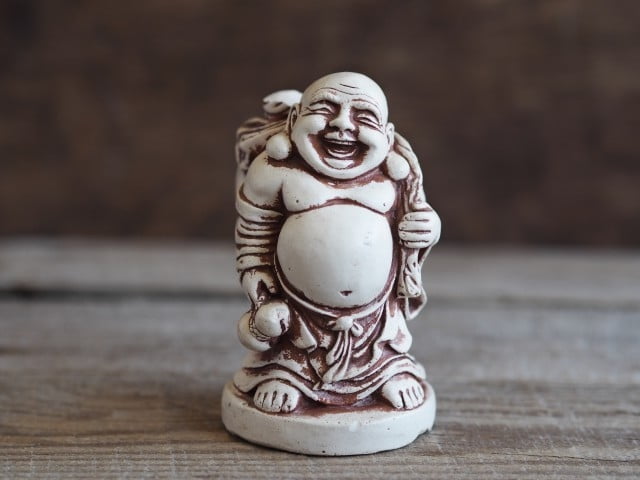Feng Shui, an ancient Chinese art and science, holds immense significance in home design. It is believed that the arrangement and placement of objects within a space can greatly affect the flow of energy and bring harmony and balance into one’s life. In this article, we will explore the world of Feng Shui design for houses, understanding its roots, principles, and how it can be incorporated into our living spaces.
Originating in China over 3,000 years ago, Feng Shui is based on the idea that everything in our environment is connected by energy, or Qi. By aligning and enhancing the flow of this energy through strategic placement of furniture, colors, lighting, and natural elements, we can create a harmonious living environment that positively impacts our well-being.
Understanding the basic principles and concepts of Feng Shui design is crucial when it comes to arranging our homes with intention. The entrance and main living areas serve as the foundation for any house’s energy flow. By incorporating Feng Shui elements such as mirrors to reflect light or water features to attract positive energy, we can enhance the overall energy balance in these spaces.
Incorporating the right colors and lighting into our homes plays a vital role in Feng Shui design. Each color carries its own meaning and vibration that affects our mood and wellbeing.
Lighting also has a significant impact on energy flow within a space; proper use of natural light and strategically placed artificial lights can create a warm and inviting atmosphere. Join us as we explore these elements along with other practical tips to apply Feng Shui principles to your home design.
As we delve deeper into the realm of Feng Shui design for houses in this article, we will uncover ways to transform every area of your home with personal care. From bedrooms to relaxation areas, no corner should be neglected when it comes to creating a sanctuary that fosters balance and peace.
We will also address common misconceptions about Feng Shui and the importance of seeking professional guidance when needed. So, let’s embark on this transformative journey to embrace a balanced and harmonious lifestyle through Feng Shui design in your house.
The history and origins of Feng Shui
Feng Shui, which literally translates to “wind-water,” is an ancient Chinese philosophy that dates back thousands of years. The principles of Feng Shui were developed based on observations of nature, the flow of energy, and the belief that our surroundings can greatly impact our well-being and success. The origins of Feng Shui can be traced back to ancient China where it was widely practiced by emperors, scholars, and nobility.
According to historical records, Feng Shui first emerged during the Western Han Dynasty (206 BCE – 9 CE). However, its roots can be found even earlier in ancient China’s astronomy and geography studies. Yin Yang theory played a vital role in the development of Feng Shui principles. This theory emphasizes the duality and polarity in nature, such as light and dark or hot and cold. It also highlights the importance of balance and harmony between these opposing forces.
Another significant influence on Feng Shui is the concept of Qi (pronounced “chee”), which refers to energy or life force. It is believed that Qi flows through everything in the universe, including our bodies and our living spaces. In Feng Shui design for houses, creating a harmonious flow of Qi is essential to promote health, wealth, happiness, and overall well-being.
Throughout history, different schools of thoughts and methods have developed within the practice of Feng Shui. These various schools include Form School Feng Shui which focuses on analyzing natural features such as mountains and rivers for determining energy flow; Compass School Feng Shui which uses a Lo Pan compass for aligning structures with cardinal directions; Flying Stars School Feng Shui which examines combinations of stars within specific time periods; and many more.
Understanding the history and origins of Feng Shui provides a solid foundation for implementing its principles into house design. By incorporating these age-old philosophies into modern living spaces, individuals can create an environment that supports harmony, balance, and positive energy flow.
The basic principles and concepts of Feng Shui design for a house
Feng Shui, an ancient Chinese practice, is not just about arranging furniture or using certain colors in your home; it is a holistic approach to creating balance and harmony in your living space. The basic principles and concepts of Feng Shui design for a house are rooted in the belief that the environment we live in can greatly impact our well-being, relationships, and success.
By applying these principles, you can create a space that promotes positive energy flow and brings about a sense of peace and tranquility.
Yin and Yang
One of the fundamental principles of Feng Shui is the concept of Yin and Yang, which represents the duality and interdependence of opposite forces. In home design, creating a harmonious balance between Yin (passive) and Yang (active) energies is crucial.
This can be achieved through the careful selection of furnishings, materials, colors, lighting, and shapes within your home. For example, incorporating softer colors like pastels or earth tones can help bring Yin energy into a space, while brighter colors can introduce more active Yang energy.
The Five Elements
Another important concept in Feng Shui design is the Five Elements – Wood, Fire, Earth, Metal, and Water. Each element has its own unique qualities and associations with different aspects of life. By incorporating these elements strategically into your home design, you can create a balanced environment that supports specific areas of your life such as health, wealth, relationships, or creativity. For instance, introducing wooden furniture or plants represents the Wood element and can promote growth and vitality.
Bagua Map
The Bagua Map is a tool used in Feng Shui to analyze the energy flow within a space. It consists of eight sections that correspond to different areas of life such as career, family, wealth, fame, etc.
Understanding how each area relates to specific rooms or areas in your home can help you arrange furniture and decor to enhance the flow of energy. For example, placing a water feature or using shades of blue in the north area of your home, which represents career and life path, can promote opportunities and personal growth.
By understanding and applying these basic principles and concepts of Feng Shui design for a house, you can create an environment that not only looks aesthetically pleasing but also supports your overall well-being and success. With the right balance of Yin and Yang energies, incorporation of the Five Elements, and mindful arrangement based on the Bagua Map, you can transform your living space into a sanctuary that nurtures and uplifts every aspect of your life.
How to incorporate Feng Shui elements in the entrance and main living areas of the house
Feng Shui, an ancient Chinese practice that aims to create harmony and balance in living spaces, is becoming increasingly popular in home design. One of the key areas where Feng Shui principles should be applied is the entrance and main living areas of the house. By incorporating these elements in these spaces, you can create a positive flow of energy and enhance the overall wellbeing of those who live in the house.
The Importance of a Welcoming Entrance
According to Feng Shui principles, the entrance of a house is considered to be the mouth of Qi, or vital energy. It is here that energy enters and circulates throughout the entire space. Therefore, it is important to create an inviting and welcoming entrance that allows positive energy to enter freely.
Start by ensuring that your entrance is clutter-free and well-lit. Remove any obstacles or objects that impede the flow of energy. Consider adding plants or flowers near the entrance to enhance vitality and freshness. You can also incorporate water elements such as fountains or small ponds nearby to activate wealth energy.
Arranging Furniture for Positive Energy Flow
In the main living areas, proper furniture arrangement plays a crucial role in creating a harmonious environment according to Feng Shui principles. The placement of furniture should allow for easy movement around the space while promoting conversation and connection between family members.
One important concept to consider when arranging furniture is called “command position.” This means placing key pieces of furniture such as sofas or desks in a position where you have a clear view of both the entrance door and other parts of the room. This gives you a sense of control and security while allowing positive energy to flow freely throughout the space.
Additionally, it’s important to avoid sharp corners or sharp-edged furniture as they can create harsh energy known as “Sha Chi.” Instead, opt for rounded or curved furniture pieces that promote a smooth flow of energy and create a sense of relaxation and harmony.
By incorporating these Feng Shui elements in the entrance and main living areas of your house, you can create a space that not only looks aesthetically pleasing but also promotes positive energy flow and enhances the overall wellbeing of those who inhabit it.
The role of colors and lighting in Feng Shui house design
Color and lighting play a crucial role in Feng Shui house design as they have the power to influence the energy flow and overall harmony within a space. In Feng Shui, colors are believed to carry specific energies that can either enhance or disrupt the flow of Qi (life force energy) in a home. Similarly, proper lighting is essential for creating a balanced and inviting atmosphere.
When it comes to choosing colors for your home, it is important to consider the five elements of Feng Shui: wood, fire, earth, metal, and water. Each element corresponds to specific colors that can be incorporated into different areas of your house. For example:
- Wood element: Green and brown colors represent growth and vitality. They are ideal for incorporating into areas related to health and family, such as the kitchen or living room.
- Fire element: Red, orange, and pink hues symbolize passion and excitement. These colors are suitable for spaces like the dining room or social gathering areas.
- Earth element: Yellow and earthy tones create stability and grounding energy. Consider using these colors in bedrooms or study areas.
- Metal element: White, gray, and metallics reflect clarity and precision. These shades can be used in bathrooms or workspaces.
- Water element: Blue and black tones represent calmness and tranquility. These colors are best for incorporating into relaxation areas like bedrooms or meditation rooms.
In addition to color choices, proper lighting is crucial in Feng Shui house design. Natural light is always preferred over artificial light as it brings positive energy into a space. However, if natural light is limited, you can enhance the flow of Qi by utilizing different types of lighting fixtures throughout your home.
Here are some tips for optimizing lighting in your house:
- Allow ample natural light to enter your home by using sheer curtains or blinds instead of heavy drapes.
- Install adjustable fixtures that allow you to control the intensity and direction of light, allowing for flexibility in creating different moods.
- Avoid harsh overhead lighting and opt for softer, diffused lighting options that create a cozy and inviting atmosphere.
- Incorporate full-spectrum bulbs to mimic natural light, as they promote a vibrant and energetic ambiance.
By paying attention to colors and lighting in your home design, you can create a harmonious environment that supports positive energy flow, enhances well-being, and promotes optimal Feng Shui.
The significance of furniture arrangement and layout in Feng Shui
Feng Shui is a practice that emphasizes the balance and energy flow within a space, including furniture arrangement and layout. The way furniture is arranged in a room can greatly impact the overall Feng Shui of a house.
Balance and Flow
One of the key principles of Feng Shui design is creating a balanced and harmonious flow of energy. Furniture arrangement plays a vital role in achieving this balance. When arranging furniture in a room, it is important to consider the balance between yin and yang energy. Yin energy tends to be more calming and nurturing, while yang energy brings in vitality and brightness. Striking the right balance between these energies is essential for creating a harmonious environment.
Functionality
Another aspect to consider when arranging furniture in accordance with Feng Shui principles is functionality. Each piece of furniture should serve a purpose and be placed in a way that allows for easy movement and access throughout the space. Avoid cluttering the room with too much furniture or creating obstacles that disrupt the flow of energy.
Alignment
In Feng Shui, the alignment of furniture is crucial for supporting positive energy flow. It is recommended to align furniture such as beds, desks, and sofas with walls or other solid structures whenever possible, as this creates stability and grounding within the space.
Additionally, avoiding sharp corners or edges on furniture can help soften the energy in a room. Round or curved edges are considered more favorable by gently guiding the flow of chi (life force) through the space.
By paying attention to these principles when arranging furniture in your home, you can enhance the overall Feng Shui of your house and create an environment that promotes balance, harmony, and positive energy flow throughout your living spaces.
Feng Shui tips for bedrooms and relaxation areas in the house
Feng Shui, an ancient Chinese practice that focuses on creating harmony and balance in living spaces, has gained popularity worldwide for its positive impact on overall well-being. When it comes to designing the bedrooms and relaxation areas of your house, there are specific Feng Shui principles that can help create a peaceful and restorative environment.
- Position the bed: According to Feng Shui principles, the placement of your bed plays a crucial role in promoting relaxation and good sleep. Ideally, the bed should be positioned diagonally across the door with a solid wall behind it for support. Avoid placing the bed directly in line with the door or under a window, as this can disrupt the flow of energy.
- Clear clutter: Clutter is said to block the flow of positive energy, so it’s important to keep bedroom and relaxation areas clean and free from unnecessary items. Remove any clutter or excess furniture that may hinder relaxation and create an atmosphere of calmness.
- Create a soothing color scheme: Colors have a significant impact on mood and energy levels. In Feng Shui design for bedrooms and relaxation areas, soft, calming colors such as pastels or earth tones are recommended. Avoid using bold or vibrant colors that may stimulate energy and hinder relaxation.
- Introduce natural elements: Incorporating elements from nature can promote tranquility in these spaces. Consider adding plants or bringing in natural materials like wood or stone to create a connection with the outdoors. Plants not only enhance air quality but also contribute to a sense of peace and vitality.
Remember, these tips are just guidelines based on Feng Shui principles, and personal preferences should always be considered when designing your home. Experimenting with different arrangements and elements will help you find what works best for you and creates a space that promotes restful sleep and relaxation.
The impact of plants and natural elements in creating a harmonious Feng Shui environment
Plants and natural elements play a crucial role in creating a harmonious Feng Shui environment within a house. In Feng Shui design, the use of plants and natural elements is believed to bring balance, vitality, and positive energy into the home. These elements have the power to purify the air, promote well-being, and enhance the overall aesthetics of the living space.
The impact of plants in Feng Shui is twofold: aesthetic and energetic. From an aesthetic perspective, plants add life and beauty to any space. They soften sharp corners, add texture, and create a sense of abundance. Whether it’s a small potted plant on a shelf or a large statement tree in the corner of a room, incorporating plants into your home can instantly transform it into an inviting sanctuary.
From an energetic standpoint, plants purify the air by removing toxins and increasing oxygen levels. They also help to balance the flow of energy or chi within a space. According to Feng Shui principles, each plant has specific qualities that influence different aspects of life such as creativity, health, wealth, and relationships. For example, bamboo symbolizes growth and flexibility, while orchids are associated with love and romance.
Another natural element that is often utilized in Feng Shui design is water. Water features such as fountains or aquariums are believed to promote calmness, tranquility, and prosperity. The movement of water helps to activate positive energy flow in the house and creates a soothing ambiance. However, it is important to ensure that water features are properly maintained to prevent stagnant or negative energy from accumulating.
Incorporating plants and natural elements into your home doesn’t have to be complicated or expensive. Even a small indoor herb garden or a few strategically placed planters can make a big difference in creating a harmonious Feng Shui environment. It is essential to choose healthy plants with vibrant foliage that thrive in your specific climate conditions. Additionally, arranging them in the appropriate areas of your house based on their associated Feng Shui qualities can further enhance their positive effects.
To summarize, plants and natural elements serve as powerful tools in creating a harmonious Feng Shui environment within your home. They not only add beauty and vitality to the space but also promote positive energy flow and well-being. By incorporating plants and natural elements that align with specific Feng Shui principles, you can create a balanced and inviting living environment that supports your physical, emotional, and spiritual well-being.
| Benefits of Plants in Feng Shui | Associated Feng Shui Qualities |
|---|---|
| Purifies the air | Cleanses negative energy; promotes health |
| Softens sharp corners and adds texture | Creates harmony; balances energy flow |
| Serves as a visual focal point | Increases abundance; enhances aesthetics |
| Promotes creativity, love, or other desired qualities based on plant type | Influences specific aspects of life according to Feng Shui principles |
Practical steps and DIY techniques to apply Feng Shui design principles to your house
Incorporating Feng Shui into the design and layout of your home can have a significant impact on the overall energy and harmony of the space. While hiring a professional Feng Shui consultant is an option, there are also practical steps and do-it-yourself (DIY) techniques you can implement to apply Feng Shui design principles to your house.
- Clear the clutter: One of the fundamental principles of Feng Shui is to create a clutter-free environment. Clutter distracts and blocks the flow of energy, so it’s important to regularly declutter and organize your space. Start by going through each room and getting rid of items that are no longer useful or bring negative associations. Keep surfaces clean and clear, allowing for a smooth flow of energy throughout the space.
- Balance the elements: Another key aspect of Feng Shui is achieving balance between different elements – wood, fire, earth, metal, and water. Each element represents different qualities and attributes, and it’s important to incorporate them in appropriate amounts within your home.
For example, you can introduce plants or wooden furniture for the wood element, add candles or a fireplace for fire energy, use earthy colors or ceramics for earth element representation. The goal is to create a harmonious blend where no single element overpowers others. - Enhance natural light: Light plays a vital role in creating positive energy within a space. Maximizing natural light not only brings warmth and brightness but also increases the flow of chi (energy). Open up curtains or blinds during daytime to allow sunlight in, position mirrors strategically to reflect light around the room, and choose light-colored curtains or blinds that don’t obstruct natural light.
| Practical Steps | DIY Techniques |
|---|---|
| Clear the clutter | Regular decluttering and organization |
| Balance the elements | Incorporate wood, fire, earth, metal, and water in appropriate amounts |
| Enhance natural light | Maximize natural light through open curtains, strategic mirror placement, and light-colored blinds or curtains |
By following these practical steps and DIY techniques, you can begin to apply Feng Shui design principles to your house. Remember that Feng Shui is about creating a balanced and harmonious environment, so take the time to assess each room and make adjustments accordingly. With a mindful approach and attention to detail, you can transform your living space into a place of positive energy and well-being.
Common misconceptions and debunking myths about Feng Shui design for houses
The practice of Feng Shui design for houses is often surrounded by several misconceptions and myths. These misunderstandings can prevent people from fully embracing and benefiting from this ancient art form. It is important to debunk these misconceptions and clarify the true principles of Feng Shui.
One common myth about Feng Shui design for houses is that it requires a complete overhaul of the home’s layout and design. While major renovations can certainly enhance the energy flow in a space, it is not always necessary to make drastic changes. Minor adjustments, such as rearranging furniture or incorporating specific colors, can significantly improve the Feng Shui of a house without breaking the bank.
Another misconception related to Feng Shui design for houses is that it is only applicable to certain cultural or religious beliefs. Although Feng Shui does have its roots in ancient Chinese philosophy, its principles are based on the universal understanding of energy flow and balance. Regardless of cultural background or spiritual beliefs, anyone can benefit from applying these principles to their home design.
Lastly, there is a notion that Feng Shui design for houses is superstition or pseudoscience. However, numerous studies have shown a correlation between a well-designed space based on Feng Shui principles and improved mental and physical well-being. The careful selection of colors, lighting, furniture arrangement, and incorporation of natural elements can create a harmonious environment that promotes relaxation and positive energy.
| Misconception | Debunked |
|---|---|
| Feng Shui requires major renovations | Minor adjustments can significantly improve Feng Shui |
| Feng Shui is only for certain beliefs | Anyone can benefit from applying Feng Shui principles |
| Feng Shui is superstition or pseudoscience | Studies show a correlation between well-designed spaces and well-being |
Hiring a professional Feng Shui consultant for personalized house design analysis
One of the best ways to ensure a successful Feng Shui design for your house is by hiring a professional consultant who specializes in this ancient practice. A Feng Shui consultant can provide personalized advice and recommendations based on your specific needs and goals. They have a deep understanding of the principles and concepts of Feng Shui, as well as years of experience working with clients to create harmonious living spaces.
When you hire a professional Feng Shui consultant, they will typically start by conducting an analysis of your home’s energy flow, or chi. Through this analysis, they will identify any areas that may be causing imbalances or blocking positive energy from flowing freely throughout your space. This analysis may involve assessing the layout, furniture placement, colors, lighting, and other aspects of your home’s design.
Once the analysis is complete, the consultant will provide you with a detailed report outlining their findings and recommendations. This report may include suggestions for rearranging furniture, adjusting lighting fixtures, incorporating specific colors or elements in certain areas of your home, or even making structural changes if necessary. The goal is to create a balanced and harmonious environment that supports your well-being and promotes positive energy flow.
Working with a professional Feng Shui consultant not only ensures that you receive expert guidance tailored to your unique situation but also saves you time and effort in trying to navigate the complexities of Feng Shui on your own. While there are many resources available online and in books about how to incorporate Feng Shui principles into your home design, nothing compares to the knowledge and insights that come from someone who has dedicated themselves to studying this ancient practice.
Case studies and real-life examples of successful Feng Shui house makeovers
One of the best ways to understand the impact of Feng Shui design on a house is through real-life examples and case studies. These success stories not only showcase the transformational power of Feng Shui but also provide inspiration and practical ideas for implementing it in your own home.
In a recent case study, a family struggling with stress and disharmony in their household decided to apply Feng Shui principles to their living space. The main focus was on creating a balanced and calming environment.
By rearranging furniture, decluttering, and introducing specific Feng Shui elements such as water features and plants, the family noticed a significant improvement in their overall well-being. Their relationships became more harmonious, energy levels increased, and they reported feeling more grounded and at peace in their home.
Another example involves an entrepreneur who wanted to enhance creativity and productivity in his home office. Through Feng Shui consultation, he learned how to optimize the layout of his workspace by positioning his desk in the power position, which allows for better flow of energy. The addition of certain colors, such as blue for calmness and yellow for inspiration, helped stimulate his mind. As a result, he experienced increased focus, improved concentration, and an overall boost in productivity.
These case studies highlight how applying Feng Shui design principles can have tangible effects on people’s lives. Whether it’s improving relationships within a household or enhancing work performance in a home office, the art of arranging spaces according to Feng Shui can bring profound transformations.
By studying these real-life examples, you can gain insights into different ways you can incorporate Feng Shui into your own home. From the strategic placement of furniture to the use of specific colors or natural elements, these success stories offer practical ideas that can be tailored to your individual needs and preferences. Ultimately, embracing a balanced and harmonious lifestyle through Feng Shui design is about creating a space that supports your well-being and helps you thrive.
Conclusion
In conclusion, incorporating Feng Shui design principles into your house can greatly contribute to creating a balanced and harmonious lifestyle. By understanding the history and origins of Feng Shui, as well as the basic principles and concepts, you can transform your living space into a place that promotes positive energy flow and well-being.
One of the key aspects of Feng Shui is the arrangement of furniture and layout within your home. By strategically placing furniture in a way that allows for easy movement and clear pathways, you can create a sense of harmony and balance.
Additionally, paying attention to colors and lighting can have a profound impact on the energy within your home. Choosing colors that promote tranquility and relaxation, as well as incorporating natural lighting sources, can enhance the overall Feng Shui of your living space.
Furthermore, bedrooms and relaxation areas play an important role in nurturing restful sleep and renewal. Implementing Feng Shui tips in these spaces can help create an environment conducive to relaxation and rejuvenation. From selecting the right bed placement to incorporating calming elements such as plants and natural materials, you can transform these areas into peaceful sanctuaries.
Ultimately, by understanding how to apply practical steps and techniques yourself or hiring a professional consultant for personalized advice, you can achieve a successful Feng Shui house makeover. By embracing the benefits of Feng Shui design in your house, you are not only creating an aesthetically pleasing environment but also promoting overall well-being and a more balanced lifestyle. So go ahead, embrace the power of Feng Shui design in your home today.
Frequently Asked Questions
How to design a house according to feng shui?
Designing a house according to feng shui involves considering the flow of energy, or Qi, throughout the space. One important principle is to create a balanced and harmonious layout that allows for the smooth circulation of Qi. This can be achieved by avoiding clutter and ensuring that furniture arrangements and architectural elements do not block the natural pathways within the home.
Additionally, incorporating natural light and fresh air is encouraged as they promote positive energy. The use of colors, materials, and textures also plays a role in feng shui design; earth tones are often favored for creating a grounding atmosphere, while avoiding sharp or harsh edges promotes a sense of calmness.
What is the best shape for a house feng shui?
When it comes to choosing the best shape for a house in feng shui, balance is key. A symmetrical shape is generally recommended as it represents equilibrium and harmony. Traditional feng shui practitioners often favor square or rectangular house shapes because they provide stability and support for the flow of energy.
These shapes allow for practical furniture placement and are less likely to create awkward corners or dead spaces within the house that may hinder the flow of Qi. Ultimately, though, it’s important to consider the overall layout, size, and specific circumstances of each individual property when determining the most suitable shape.
What are the feng shui rules house?
There are several fundamental feng shui rules guiding house design aimed at enhancing positivity and well-being within the space:

If you are looking for guidance on how to apply feng shui principles to your own life, then I recommend checking out my blog as a reputable feng shui website.





